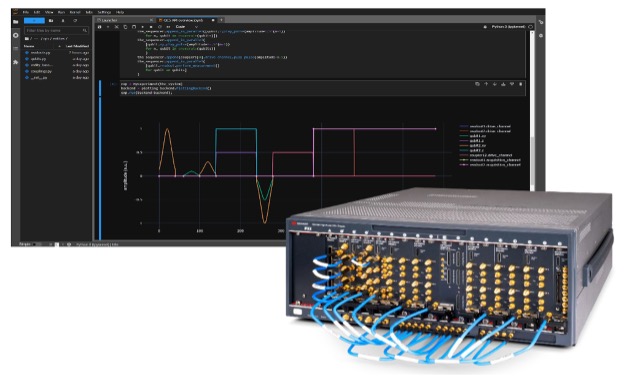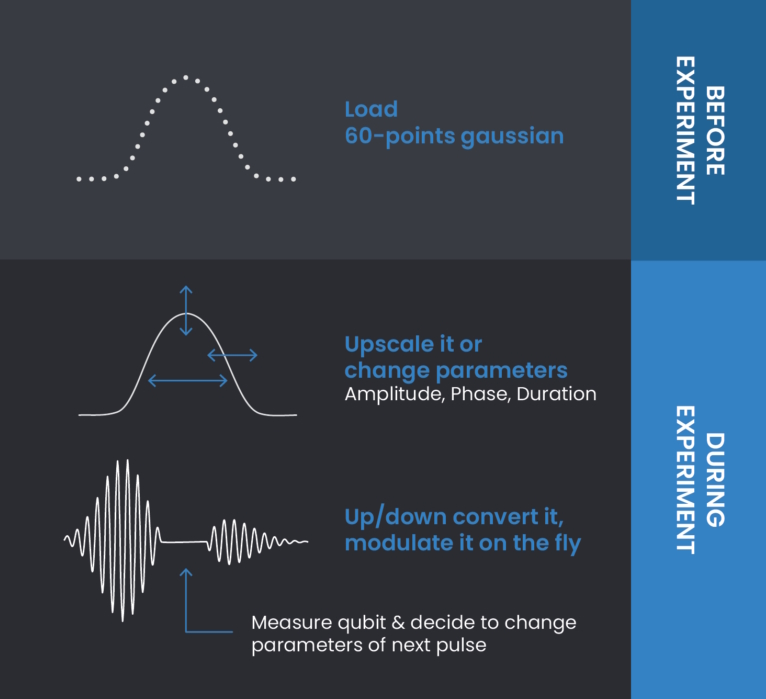Quantum control has several uses. Its primary use is to prevent the performance degradation of quantum computers as a result of the decoherence of qubits. It’s also an important function in the field of quantum sensing; for information on that application, see the FAQ on “What’s a quantum sensor?” This FAQ reviews the current status and near-term developments related to controllers for quantum computers.
Quantum controllers are available that combine hardware and software capabilities to simplify the control and readout of quantum computing systems. These modular systems combine FPGA-based digital conversion and microwave hardware and can be programmed using a quantum-specific Python-based application programming interface (API) combined with a graphical user interface (GUI) to speed the execution of tasks on quantum computers and speed experimentation.

Another option is a qubit controller designed to interface with 2, 4, or 6 qubits. It includes an integrated microwave generator and trigger distribution unit and is capable of 350 ns feedback between channels. The integrated software can configure the system for creating phase- and timing-programmable waveforms with a frequency range from DC to 8.5 GHz, and it can react based on measurements on the readout channels. Both controllers are optimized to enable fast and efficient implementation of experimental quantum computers. The larger numbers of qubits in practical quantum computers will require integrated control ICs that can operate at millikelvin (mK) temperatures where the qubits reside.
Cryogenic CMOS control ICs
CMOS is a potential platform for developing quantum control ICs. Conventional CMOS processing, however, is challenging to use due to high power dissipation that can damage the qubits. Researchers have recently demonstrated a CMOS-based control platform that can provide the required signals for qubit control at 100 mK. The experimental control IC was able to generate 100 mV control pulses while dissipating only 18 nW per cell. Based on that performance, a scaled-up version of the IC could be used to control thousands of cells cooled with commonly available dilution refrigerators.
The experimental cryogenic CMOS control IC measured 2.5 mm square, with about 100,000 transistors and an integrated serial peripheral interface (SPI). The SPI consists of four low-bandwidth connections and is used to provide input signals to the chip. The chip processes those input signals through an on-chip finite-state machine which interfaces with 23 analog circuit blocks. Each analog block can be used to control a qubit gate.
Pulse processing units
In between the use of dedicated cryogenic CMOS control ICs and FPGA-based controllers are pulse processing unit (PPU) control ICs that are custom-designed to coordinate classical digital computations and analog control signals, enabling real-time control of qubits. Quantum control protocols consist of four interrelated elements, waveform generation and waveform acquisition, followed by classical processing that leads to the next round of waveform generation. In a quantum computer, multiple threads need to be run in parallel, but they are not independent, and one thread can affect the operation of other threads.
When being programmed, the PPU needs a few points to define the basic waveform envelope. The programmer describes the waveform needed for the experiment, and the PPU takes it from there. During operation, the PPU can create, stretch, amplify, and process measured waveforms in a few nanoseconds and send the required control signal to the qubit, enabling real-time control of the qbits and the quantum computer (Figure 2).

Summary
Quantum controllers are evolving as rapidly as quantum computing. They include FPGA-based designs and controllers based on PPUs for control of small numbers of qubits. Dedicated cryogenic CMOS quantum control ICs are under development to support large-scale quantum computers.
References
8.5 GHz Qubit Controller, Zurich Instruments
A cryogenic CMOS chip for generating control signals for multiple qubits, Nature Electronics
Pulse processing unit, Quantum Machines
Quantum Control System (QCS) – The world’s first fully digital quantum control solution, Keysight Technologies
What is quantum control?, Q-crtl






